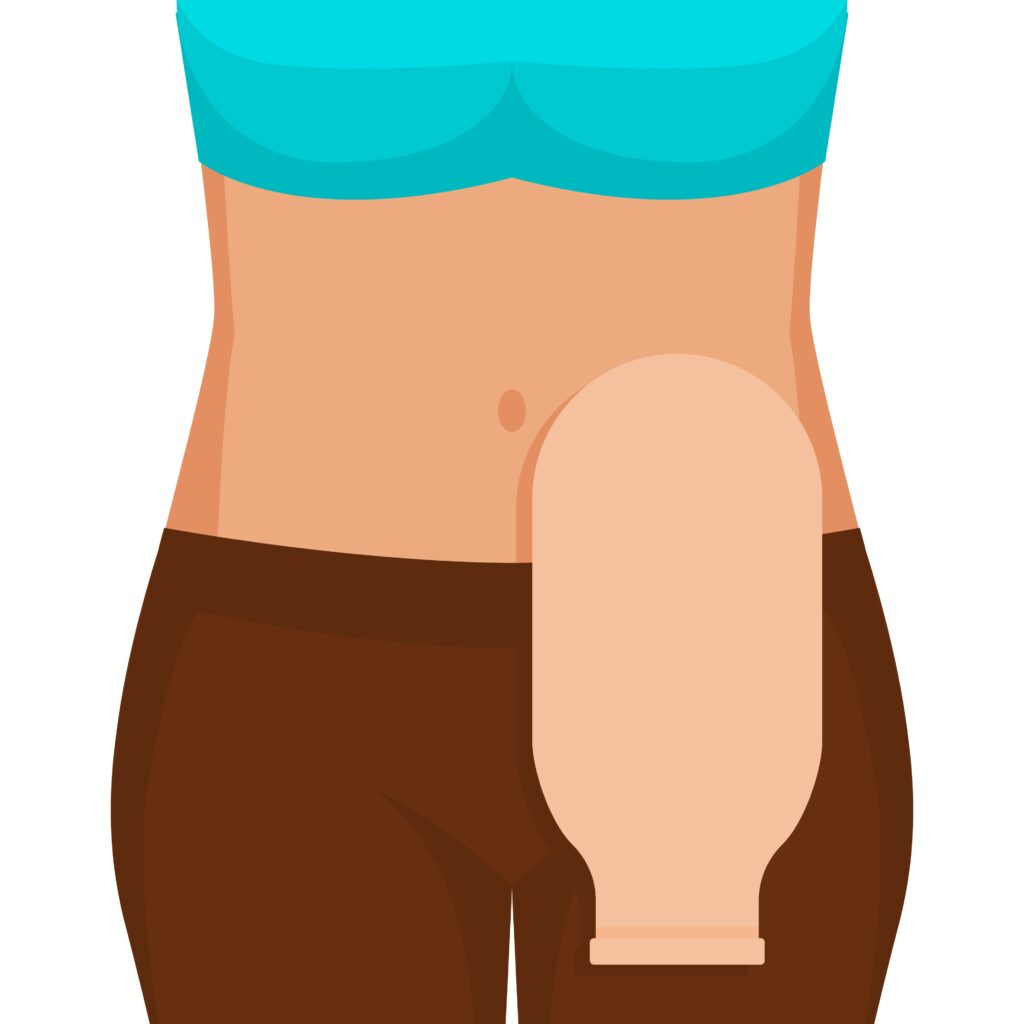Caring for an Ostomy
Ostomy Stoma Care
After all, caring for an ostomy is an important part of maintaining your quality of life. You will need to:
• Empty your pouch as needed.
• Replace your pouching system every 4 to 7 days. Additionally, this may include measuring your stoma and cutting the barrier to size. For example, for children and infants, the pouching system usually needs to be replaced every 2 to 3 days.
• Take care for your skin and stoma paying special attention to watch for skin irritation, for instance.
,

Stoma Coverage
Furthermore, it is a good idea to cover your stoma. After all, this helps to keep dust and pollen out, not to mention small flying insects. For instance, if you cover your stoma, you will have a cleaner stoma with less crusting and probably fewer infections. Ultimately, in caring for your ostomy, you may also IRRIGATE a colostomy. Additionally, this helps you control when you eliminate waste. Moreover, irrigation requires your health professional’s approval and guidance.
Colostomy Irrigation
Colostomy irrigation is a procedure that gives people with a colostomy more control over the elimination of waste. Indeed, irrigation stimulates the intestine to function at a regular time and is generally done at the same time every day or every other day.
In this procedure, an irrigation cone and tube are connected to the stoma (the end of the exposed intestine), and irrigation fluid is flushed through the intestine to clear it of waste. Nonetheless, people who use irrigation may need only a cover or pad over the stoma. After all, they may not need a colostomy bag. Importantly, irrigation requires a health professional’s approval and guidance.
Tracheostomy Stoma Care
Futhermore, daily care of the trach site should be done to prevent infection and skin breakdown under the tracheostomy . Care should be done at least once a day and newer patients may need to do this more often.
Care Suggestions
Wash your hands.
• Make sure the patient is laying in a comfortable position on his/her back with a small blanket or towel roll under his/her shoulders to extend the neck and allow easier visualization and trach care.
• Open Q-tips, trach gauze and regular gauze.
• Cut the trach ties to appropriate length (if trach ties are to be changed).
• Pour 1/2 strength hydrogen peroxide (1/2 strength with sterile water) into one cup and sterile water into the other.
• Clean the skin around the trach tube with Q-tips soaked in 1/2 strength hydrogen peroxide. Using a rolling motion, work from the center outward using 4 swabs, one for each quarter around the stoma and under the flange of the tube. Do not allow any liquid to get into trach tube or stoma area under the tube. Note: We recommend cleaning with just soap and water in home care, using hydrogen peroxide only to remove encrusted secretions. This is because daily use of hydrogen peroxide might irritate the skin, especially in cases with small children.
Additional Care Suggestions
• Rinse the area with Q-tip soaked in sterile water.
• Pat dry with gauze pad or dry Q-tips.
• Change the trach ties if needed.
• Check the skin under the trach ties.
• For tracheostomy tubes with cuffs, check with your doctor’s office for specific cuff orders. Check cuff pressure every 4 hours (usual pressure 15 – 20 mm Hg). In general, the cuff pressure should be as low as possible while still maintaining an adequate seal for ventilation.
• Monitor skin for signs of infection. If the stoma area becomes red, swollen, inflamed, warm to touch or has a foul odor, or if the patient develops a fever, call your doctor’s office.
• Check with the doctor before applying any salves or ointments near the trach. If an antibiotic or antifungal ointment is ordered by one of our doctors, apply the ointment lightly with a cotton swab in the direction away from the trach stoma.
• Wash your hands after each trach care.







